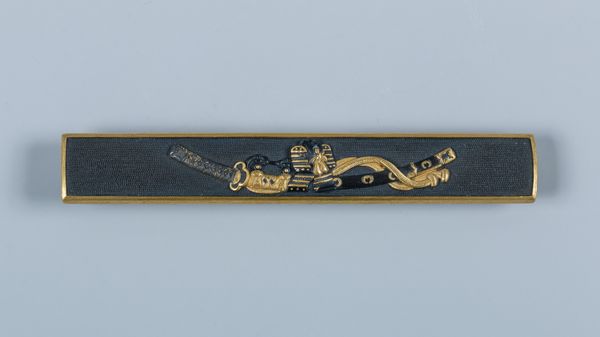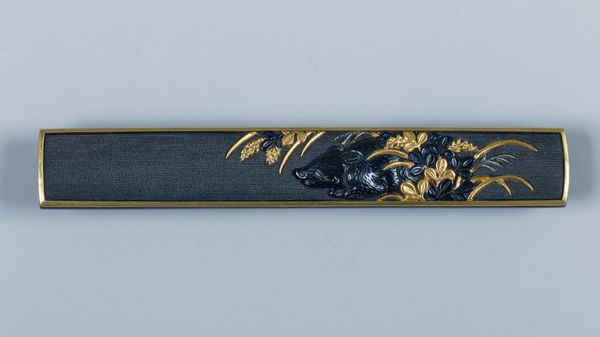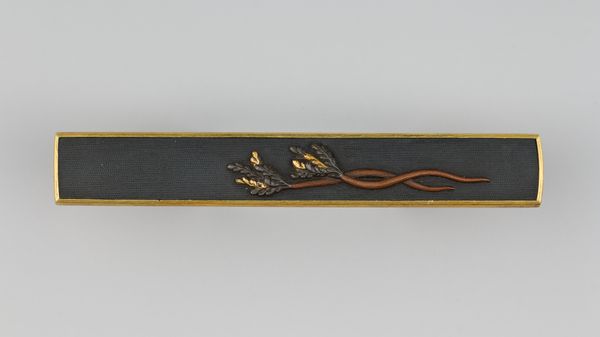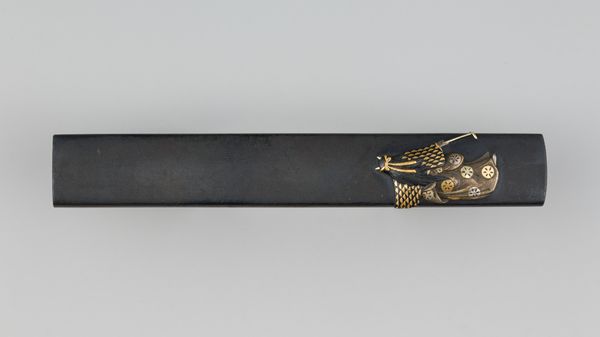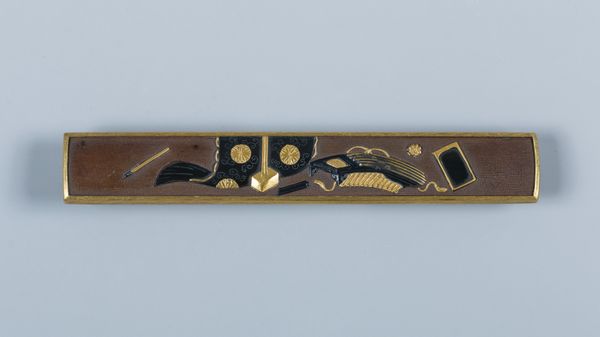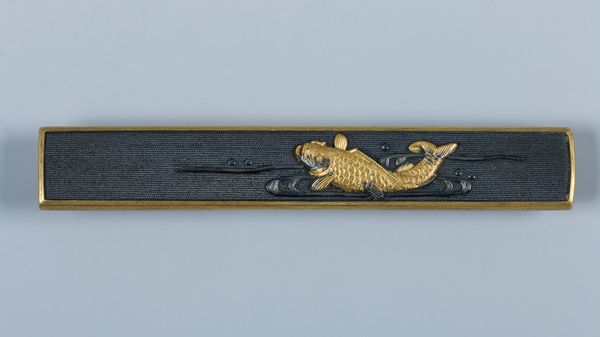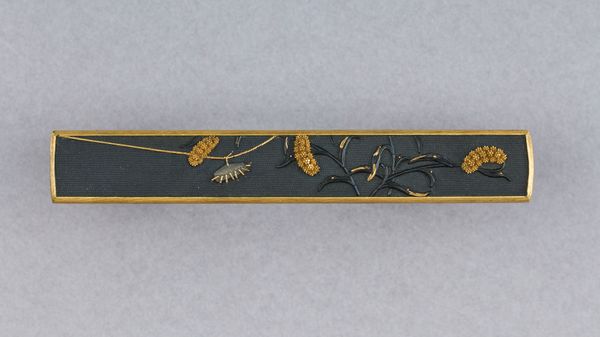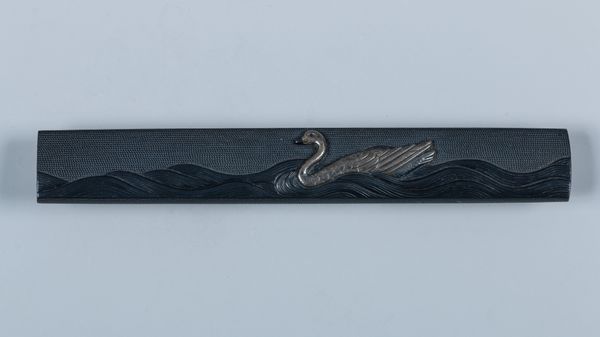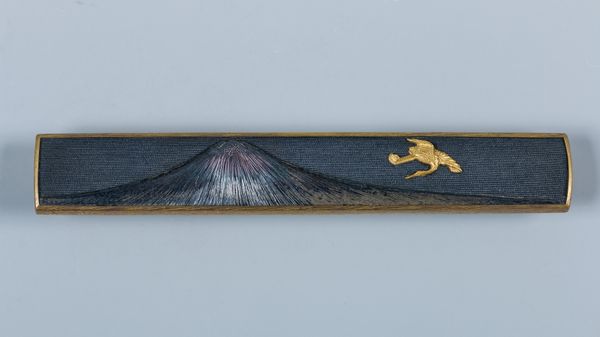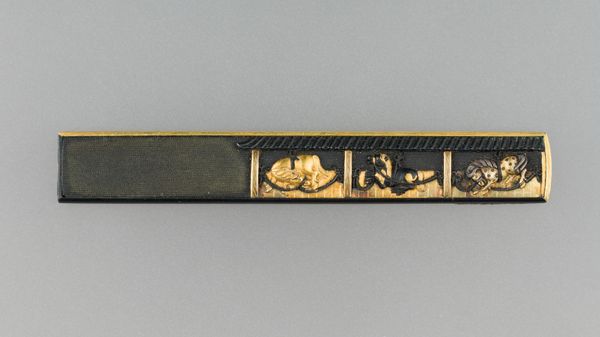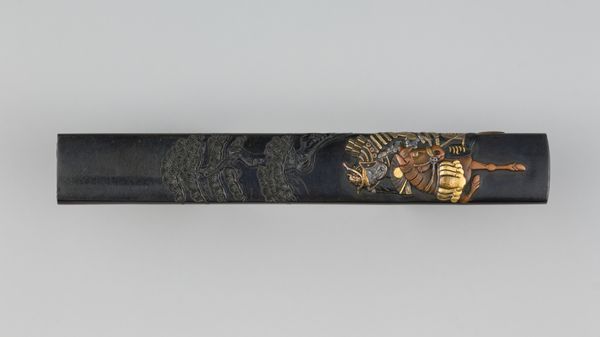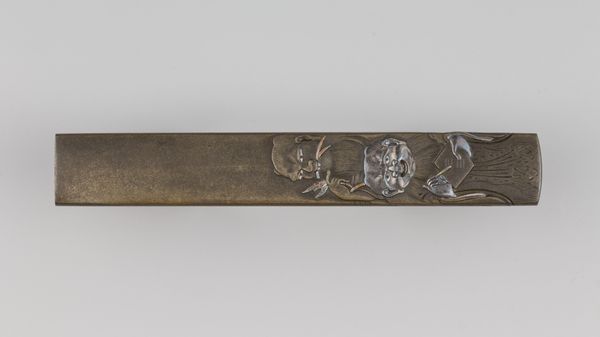
carving, metal, gold, relief
#
carving
#
metal
#
asian-art
#
gold
#
relief
#
armor
#
sword
Dimensions: L. 3 13/16 in. (9.7 cm); W. 9/16 in. (1.4 cm)
Copyright: Public Domain
Curator: At the Metropolitan Museum of Art, we're looking at a *kozuka*, or knife handle. It dates from sometime between 1800 and 1850 and is attributed to Gotō Mitsuyoshi. The main materials used are metal and gold. Editor: Immediately, what strikes me is its compact nature, yet the detail is astonishing. It looks incredibly refined. And what a wonderful use of a miniature relief sculpture against the more textured ground. It exudes power, contained power, if that makes sense. Curator: It does. *Kozuka* like these would have been fitted to the *katana*, a symbol of samurai power and status, so its visual symbolism had weight. We can read the visual program of Japanese arms as projecting authority, lineage, and even cultural aspirations. Editor: Let’s look at the symbolism. The figure, a stylized lion, appears almost heraldic in the way it's presented. The cultural memory certainly echoes throughout artistic practices across the world with subtle variations and adaptations that give particular symbolic value and uniqueness to a particular representation and artistic practice. I suspect its placement on the knife handle amplifies that sense of authority you mentioned? Curator: Absolutely. The lion in Japanese art, often referred to as a *shishi*, served as a guardian figure. Their appearance on arms elevated the warrior carrying them. They signify bravery, protection, even a divine blessing for the owner. They transformed a functional object into something possessing layers of cultural and spiritual significance. Editor: A wonderful demonstration of how social standing and symbolism were intrinsically intertwined, even on something as personal as a knife handle. A very poignant projection of an image. So what are your lasting thoughts, seeing it displayed here? Curator: Well, thinking of this piece within the historical and social contexts for which the piece was produced, its original socio-political functions and implications transform again within our museum context: The artifact takes on an enhanced role as an emblem of history. Editor: Yes, it certainly provokes a fascinating consideration of the image and the historical, psychological, and artistic contexts across both original creation and contemporary experience.
Comments
No comments
Be the first to comment and join the conversation on the ultimate creative platform.
